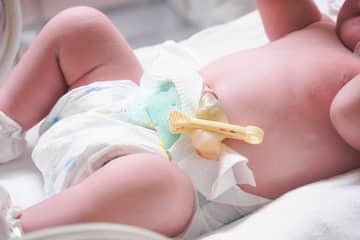
Positions for burping a baby or how to make a baby burp
In the life of babies, there are many actions that they are not able to perform safely without the assistance of their parents. Since their muscles and motor skills are not sufficiently developed in the initial stages after birth, parents are in charge of facilitating individual activities in the life of a newborn. They also include physiological processes, such as the proper burping of a baby. This activity after feeding requires a certain amount of time, patience and the right position, thanks to which the baby will get relief in the form of burping faster and easier.
Which positions for burping are the most ideal for newborns and how to apply individual positions? Do you know how long it takes to perform this activity? In the article, in addition to the answers to these questions, you will also learn why burping a baby is important.
The essence of burping a baby
Regardless of how carefully the mother monitors the baby during feeding, air is often swallowed along with breast milk or artificial milk. This side effect of feeding a newborn is the reason for the need to burp the baby after feeding. Small babies do not have an overview of how much milk their digestive tract can continuously process. It can therefore happen that some newborns swallow milk very quickly, which can lead to the need to get rid of excess food that their tummy has nowhere to store.
Burping the baby mainly serves to immediately get rid of a piece of milk, which could harm the baby when trying to throw up excess food during sleep. Burping also has a great impact on proper digestion. Thanks to this act, which in the initial stages of a newborn's life requires the assistance of the parent, the baby avoids problems with the tummy. It is not only unpleasant pain associated with reflux, and thus the backflow of stomach acid, but also colic. Although burping a baby is of great importance in many ways, the baby does not always have to complete this act. Some babies do not swallow so much air while eating, and therefore do not need to get rid of it in any way.
Another case where burping does not need to be strengthened is some newborns who only take a limited amount of milk, which does not create an urge to get rid of any excess food that could get in the way of the stomach.
It is always necessary to give the child the opportunity to burp. If it is necessary, the baby burps and can then go to sleep contentedly. If, on the other hand, burping does not occur even after 10 minutes, the child's digestive tract obviously indicates that this action is not currently necessary.
Burping can also be applied during feeding. Some babies have a tendency to swallow milk quickly, which leads to the formation of air bubbles in their tiny stomachs, which are filled with air instead of milk. Then it is necessary to interrupt the feeding, let the baby burp, and then continue breastfeeding.
Assistance in burping the baby does not necessarily have to be in the hands of the mother. Burping is the ideal time to deepen the relationship between father and child. In this case, it has a positive effect not only on the improved digestive function of the child or the bond between him and his father, but also on the mother, who can enjoy a little rest at that time.
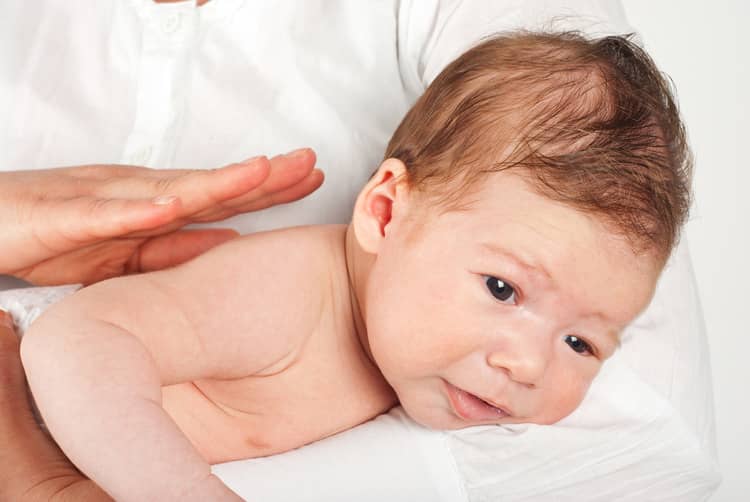
How long is assistance needed when burping a baby?
In many cases, burping is only necessary until the baby receives exclusively breast or artificial milk. It is precisely when taking this type of food that an excessive amount of air is most often swallowed, which the child then needs to get rid of.
At the time when the baby starts to receive solid food in the form of snacks, burping loses its meaning. This does not mean that this action should be completely eliminated. Because every child is individual, and therefore everyone can have different reactions of the digestive tract to the food they eat. It is therefore very important for parents to closely monitor their baby even after the introduction of complementary foods, and in case of any digestive difficulties, it is necessary to apply the technique of burping the baby. However, this action also requires a baby who receives tea from a baby bottle.
Over time, the child finds himself at the stage of life when he can sit and eat without the necessary assistance of the parent. During this period, his digestive system will develop so much that the need to burp is slowly eliminated.
How to burp a baby?
Every baby is different, so it's no surprise that a certain individuality is inherent in the burping process as well. For this reason, there are several burping positions that can suit babies.
Parents should initially try each of them to find the most ideal one that suits not only the comfort of the baby, but also the effectiveness in terms of the proper function of the child's digestive system, which is the basic goal of burping.

Vertical position over the shoulder
This basic position for burping the baby is among the most used. It consists in transferring the baby over the shoulder so that one hand of the parent supports the bottom, while the other remains on the back of the baby. In this position, the belly rests on the chest of the person holding the baby, while the head is placed on the shoulder.
While placing them in this position is enough for some babies to burp successfully, others need a greater degree of assistance from the parent to get rid of excess air or milk. Not only circular stroking of the baby's bottom will help, but also gentle patting, or banging.
There is also another vertical position in which the baby can relieve himself. The parent sits the baby on his leg, while one hand assists by holding the chest and chin, while the other moves in a circular motion along the baby's spine.
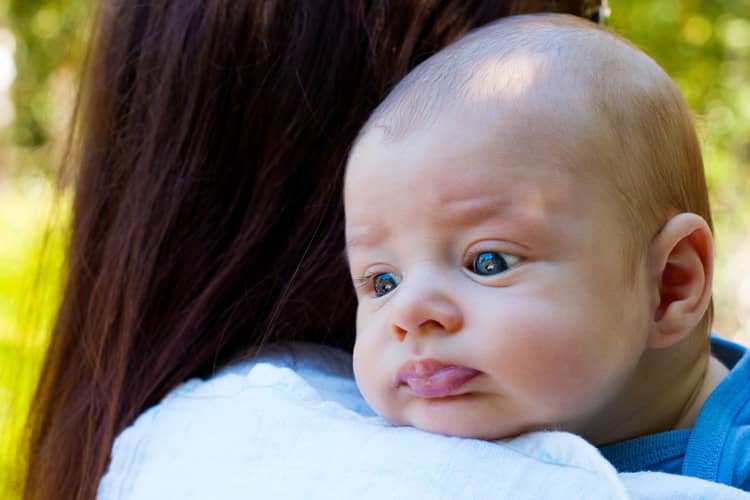
Location of tigers
If the over-the-shoulder position does not suit the baby, it is advisable to apply the frequently used tiger position, in which babies manage to burp successfully in a significantly shorter time. The position earned its animal name based on its resemblance to the position in which tigers tend to lie on tree branches.
The position consists in placing the baby on the parent's forearm so that the hand on which the baby is lying holds the outer side of the thigh crouched towards the abdomen. In order for both legs to be crouched in the same way, it is advisable to hold the other leg with the unused hand.
While the hands of the baby lying on its stomach hang on the sides of the parent's forearm, the legs remain on one side. If the parent's hand were to lead between the baby's legs, there could be an unnatural bending of the spine, and therefore a negative impact on the proper development of the baby.
An essential aspect of the tigress position is the slight forward tilt of the baby at an angle of 45 ° and the baby's head placed higher than its pelvis. The position is suitable not only for burping, but also for sleeping, looking around the baby or strengthening the neck and back muscles. It even helps with other physiological processes, such as emptying and flatulence.
Location of the dogs
The doggie position, which ranks among the most effective in terms of burping the baby, also has its animal name. In this position, it is necessary for the parent to take a sitting position. The parent's right leg should be at a higher level than the left. This can be achieved by crossing the legs or simply lifting the right lower limb.
The baby must then be placed across the womb in such a position that the chest lies on the parent's right thigh, while its legs are placed perpendicular to the parent's left thigh. With the left hand, the parent exerts pressure on the bottom, gently pressing the baby against the right thigh, which potentially leads to the relief of the baby in the form of burping.
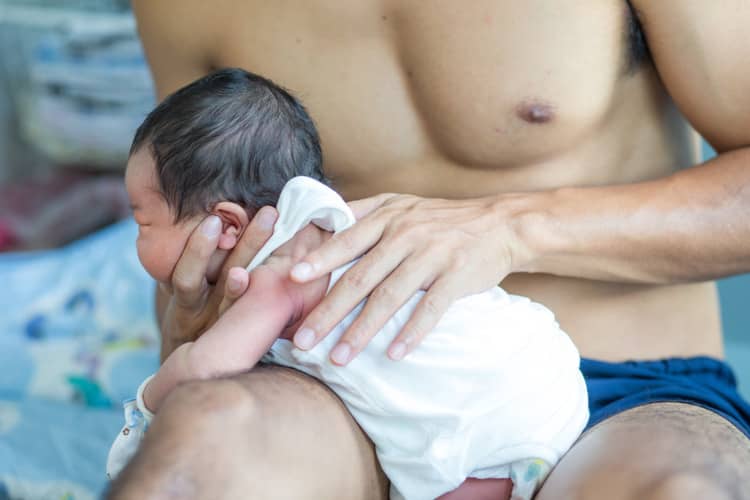
Vomiting when the baby burps
As we mentioned above, burping of a baby is not just a sound. Some babies need to get rid of excess air in their stomachs as well as excess milk in their stomachs. Then vomiting occurs.
That is why parents are recommended to wear their clothes or cover the part of the body where excess milk could land with a cloth diaper. Regurgitation of milk does not occur if the baby receives an adequate or insufficient amount of milk.
If vomiting occurs too often, or after each feeding, it is necessary to inform the pediatrician. In such situations, vomiting is accompanied by an unpleasant odor and a larger amount of regurgitated matter, while the most common cause is reflux.
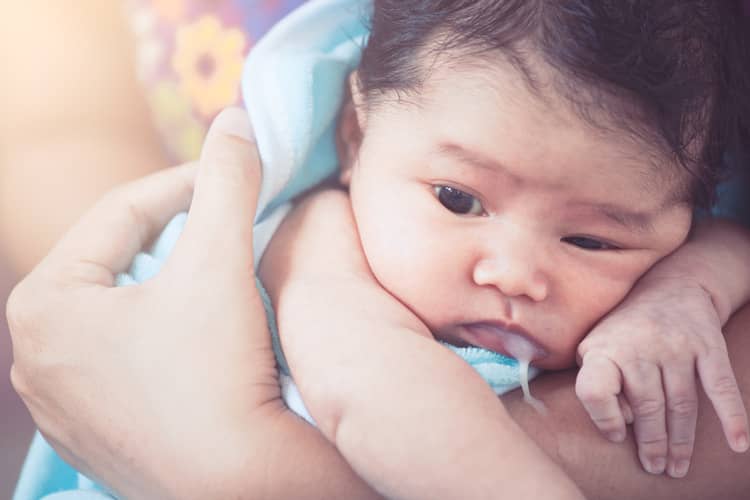
Burping a baby - experience
Discussing mothers emphasized that the best way to burp the baby is in an upright position combined with gentle patting on the back. However, they reassured nervous new mothers by saying that not every baby needs to burp, while it is best to lie on their side after feeding to be safe.
While in some cases the first successful burps occurred after two weeks of birth, other mothers shared their experiences, based on which their child did not burp for several months. They clarified their situation in terms of the individuality of each child. Some children do not need to burp. It all depends on the amount of milk they receive, the breastfeeding technique and their digestive system.
The most frequent questions - FAQ
Did you not find the information you were looking for in our article on effective baby burping techniques? Feel free to contact us in the comments section. We try to answer every comment or additional question as soon as possible.
How to make a newborn burp if he falls asleep during feeding?
How long does it take for a baby to burp?
How many times should a newborn burp a day?
How to prevent intake of excess air when feeding with the help of a bottle?
Pridať komentár






